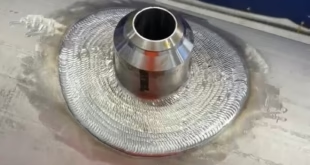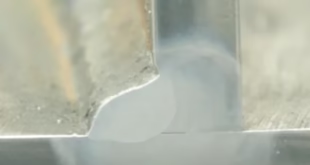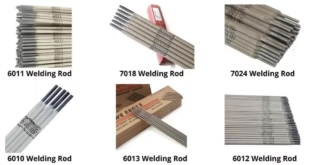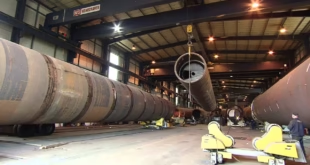What is Capacitor Discharge Welding?
Introduction
Definition of Capacitor Discharge Welding
Capacitor Discharge Welding (CDW) is a welding process that utilizes the discharge of electrical energy stored in capacitors to create a localized, high-intensity heat source for joining metal components. It is a fast and efficient welding technique commonly used for small-scale applications that require precise control over heat input and minimal distortion.
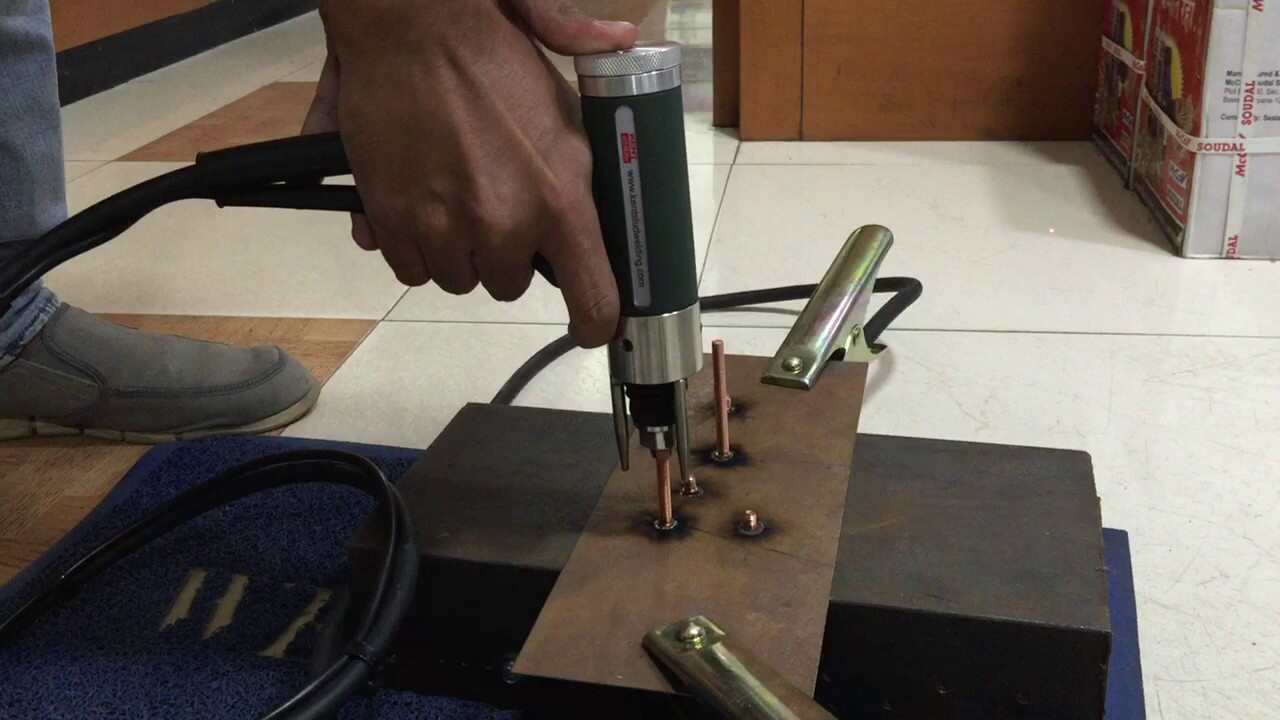
Brief overview of its applications and advantages
Capacitor Discharge Welding finds applications in various industries, including electronics, electrical, automotive, medical devices, and jewelry manufacturing. Some of the advantages of this welding process include:
- Rapid welding: CDW allows for quick weld completion, resulting in improved productivity.
- Minimal heat-affected zone: The localized and controlled heating reduces the heat input to the surrounding area, minimizing distortion and preserving the material properties.
- Joining dissimilar materials: CDW enables the joining of different metals, even those with different melting points and thermal conductivities.
Principle of Capacitor Discharge Welding
Explanation of the basic principle
Capacitor Discharge Welding works based on the principle of discharging stored electrical energy from capacitors through the workpieces to create a weld. The capacitors store a high voltage charge, which is discharged through the weld zone, generating an intense current flow for a short duration.
Description of the equipment and components used
The equipment used in CDW typically includes:
- Capacitor bank: It stores electrical energy and releases it rapidly during the welding process.
- Welding head or electrodes: These are used to apply pressure and deliver the electrical discharge to the workpieces.
- Control unit: It regulates the discharge parameters, such as voltage, current, and pulse duration.
- Fixtures and alignment tools: These are used to position and secure the workpieces during the welding process.
Role of capacitors and electrical discharge in the process
Capacitors store electrical energy in the form of charge. During the welding process, the charged capacitors are rapidly discharged through the workpieces. The discharge creates a high-intensity current flow, which generates heat at the contact point between the workpieces. This localized heating causes the metal to reach its melting point, allowing for the formation of a weld joint.
Process Steps
Pre-welding Preparation
- Selection of suitable materials for capacitor discharge welding: It is important to choose materials that are compatible for welding using the capacitor discharge method. Factors such as the type of metals, their thicknesses, and their compatibility with each other need to be considered.
- Surface preparation and cleaning of workpieces: The surfaces of the workpieces to be welded should be prepared by removing any contaminants, oxides, or coatings that may hinder the welding process. This can be achieved through cleaning methods such as grinding, sanding, or chemical cleaning.
- Fixturing and alignment of the components: The workpieces need to be securely fixtured and aligned to ensure proper contact and alignment during the welding process. Fixtures, clamps, or jigs may be used to hold the components in the desired position.
Welding Phase
- Charging of capacitors and setup of welding parameters: The capacitors are charged to store electrical energy. The welding parameters, including the voltage, current, and pulse duration, are set based on the specific requirements of the welding application. These parameters determine the energy delivered to the weld zone.
- Rapid discharge of electrical energy through the weld zone: Once the capacitors are charged, the stored electrical energy is rapidly discharged through the weld zone. This discharge creates a high-intensity current flow that generates heat at the contact point between the workpieces.
- Generation of high current and localized heating: The rapid discharge of electrical energy through the weld zone creates a high current flow. This high current generates localized heating, which raises the temperature of the metal to its melting point, facilitating the formation of a weld joint.
Solidification and Bonding
- Controlled deformation and solid-state bonding: During the welding process, the localized heating causes the metal to melt and form a weld pool. The pressure applied during welding helps in controlling the deformation of the metal and promoting solid-state bonding between the workpieces.
- Cooling and solidification of the welded joint: After the welding is completed, the weld joint is allowed to cool and solidify. The cooling rate affects the final properties of the weld, and proper cooling is essential to achieve a strong and durable joint.
Post-welding
- Inspection and testing of the weld quality: The weld joint should be inspected visually and, if necessary, subjected to non-destructive testing or other inspection methods to assess its quality. This ensures that the welding process has produced a sound and defect-free joint.
- Post-weld processing or finishing: Depending on the specific requirements of the application, the welded components may undergo post-weld processing or finishing operations such as grinding, polishing, or coating to achieve the desired final appearance or surface characteristics.
Advantages and Limitations
Advantages of Capacitor Discharge Welding
- Rapid welding process with minimal heat-affected zone: Capacitor Discharge Welding offers a fast welding process due to the high-energy discharge that creates intense localized heat. The duration of the discharge is short, resulting in minimal heat transfer to the surrounding areas. This leads to a small heat-affected zone, reducing distortion and preserving the material properties.
- Suitable for joining dissimilar materials: Capacitor Discharge Welding is effective in joining dissimilar materials. The high-intensity heat generated during the welding process allows for successful bonding of different metals with varying melting points and thermal conductivities. This makes it a versatile welding method for applications that require joining different types of metals.
- Precise control over heat input and weld quality: Capacitor Discharge Welding provides precise control over heat input and weld quality. The welding parameters, such as voltage, current, and pulse duration, can be accurately set and adjusted. This control allows for consistent and repeatable welds, ensuring high-quality joints with desired mechanical properties.
Limitations and Considerations
- Size and thickness limitations of workpieces: Capacitor Discharge Welding is best suited for small-scale applications and workpieces of relatively small size and thickness. The equipment and process may have limitations when it comes to welding large or thick materials, as the heat generated may not be sufficient for effective bonding.
- Surface finish and cleanliness requirements: The success of Capacitor Discharge Welding depends on the cleanliness and surface condition of the workpieces. The welding surfaces should be free from contaminants, oxides, and coatings to ensure proper bonding. Pre-weld cleaning and surface preparation are crucial to achieve strong and reliable weld joints.
- Equipment cost and complexity: Capacitor Discharge Welding equipment can be costly and complex compared to other welding methods. The need for specialized capacitors, control units, and welding heads adds to the overall investment. Additionally, proper training and expertise are required to operate and maintain the equipment effectively.
Applications of Capacitor Discharge Welding
Electronics and Electrical Industry
Capacitor Discharge Welding is widely used in the electronics and electrical industry for various applications, such as joining electronic components, electrical connectors, and wiring harnesses. It is particularly suitable for delicate components and small-scale assemblies that require precise and controlled heat input.
Medical Device Manufacturing
Capacitor Discharge Welding finds extensive use in the medical device manufacturing industry. It is employed for joining components in medical instruments, implantable devices, surgical tools, and other critical medical equipment. The precise control over heat input makes it ideal for ensuring the integrity and quality of welded joints in these applications.
Automotive and Aerospace Industries
Capacitor Discharge Welding plays a significant role in the automotive and aerospace sectors. It is used for welding applications such as joining wire harnesses, electrical connections, sensors, and various components in automotive and aircraft assemblies. The fast welding process and minimal heat-affected zone make it advantageous for these industries, where precise and reliable connections are essential.
Jewelry and Watchmaking
In the jewelry and watchmaking industry, Capacitor Discharge Welding is utilized for delicate and precise welding tasks. It enables the joining of small metal parts, such as clasps, settings, hinges, and chains. The controlled heat input and minimal distortion make it suitable for maintaining the integrity and aesthetics of intricate jewelry pieces.
Other Industrial Sectors
Capacitor Discharge Welding finds applications in various other industrial sectors where small-scale or precise welding is required. It is used in the fabrication of sensors, electronic components, small-scale mechanical assemblies, and intricate metalwork. The versatility of this welding method allows it to be adapted to specific industrial needs.
Capacitor Discharge Welding offers unique advantages in terms of speed, precision, and controlled heat input, making it suitable for a wide range of applications across industries. Its applications extend beyond the ones mentioned above, as it continues to find new uses in diverse industrial sectors that require fast, precise, and reliable welding.
FAQs
What type of power is used with a capacitor discharge welding gun?
A capacitor discharge welding gun typically uses electrical power stored in capacitors to deliver a high-intensity discharge for the welding process.
How does a CD welder work?
A CD welder works by storing electrical energy in capacitors and releasing it in a rapid discharge through the welding gun. The high-energy discharge creates intense localized heat, melting the metal surfaces and allowing them to be joined together.
What is a capacitor discharge stud?
A capacitor discharge stud refers to a type of fastener used in stud welding. It features a specially designed tip that can be welded to a metal surface using a capacitor discharge welding process, creating a secure and permanent connection.
What is the process of infrared welding?
Infrared welding is a welding process that utilizes infrared radiation to generate heat and melt the joining surfaces of thermoplastic materials. The heated surfaces are then pressed together to create a solid weld joint.
What are the uses of capacitor discharge?
Capacitor discharge finds various uses, including in welding processes like capacitor discharge welding and stud welding. It is also employed in electronic circuits, energy storage applications, pulse power systems, and discharge-based devices.
Why do you discharge a capacitor?
A capacitor needs to be discharged to remove any stored electrical energy and to ensure safety when working with or servicing electrical circuits or devices. Discharging a capacitor involves creating a path for the stored charge to dissipate, reducing the risk of electrical shock.
What is the difference between weld stud and CD stud?
A weld stud refers to a fastener used in stud welding, which can be joined to a metal surface using various welding methods. A CD stud, on the other hand, specifically refers to a stud designed for capacitor discharge welding, where the stud is welded to the metal surface using the rapid discharge of electrical energy.
What is a CC welder?
A CC welder stands for Constant Current welder, which is a type of welding power source that maintains a constant current output regardless of changes in the arc length or voltage. It is commonly used in certain welding processes, such as Shielded Metal Arc Welding (SMAW) or Stick Welding.
What is the difference between CD stud and arc stud?
A CD stud is a type of stud used in capacitor discharge welding, where the stud is rapidly welded to a metal surface using the discharge of electrical energy. An arc stud, on the other hand, is a stud used in arc stud welding, which involves the use of an arc to generate the necessary heat for welding the stud to the metal surface.
Why is a capacitor used in welding?
A capacitor is used in welding to store electrical energy that can be rapidly discharged during the welding process. This discharge provides a high-intensity current flow, generating the heat required for melting the metal surfaces and forming a weld joint.
What size are welding studs?
Welding studs come in various sizes, ranging from small diameters like 3/16 inch (4.8 mm) to larger diameters such as 1 inch (25.4 mm) or more. The specific size of the welding stud depends on the application and the welding process being used.
What is the voltage of a stud welder?
The voltage of a stud welder varies depending on the specific model and application. Capacitor discharge stud welders typically operate at voltages ranging from several hundred volts to several thousand volts, depending on the requirements of the welding process and the materials being welded.
Conclusion
Capacitor Discharge Welding is a welding process that utilizes the discharge of electrical energy stored in capacitors to create a localized, high-intensity heat source for joining metal components. It offers several advantages, including rapid welding with minimal heat-affected zones, suitability for joining dissimilar materials, and precise control over heat input and weld quality.
Capacitor Discharge Welding has proven to be a valuable welding method in various industries. Its benefits, such as fast welding speed, precise heat control, and versatility in joining dissimilar materials, make it well-suited for applications in electronics, medical device manufacturing, automotive, aerospace, jewelry, and other industrial sectors. The ability to create strong and reliable weld joints while minimizing distortion and preserving material properties has made it a preferred choice for specific welding requirements.
The field of Capacitor Discharge Welding continues to evolve with advancements in equipment, materials, and process optimization. Ongoing research and development aim to further enhance the capabilities of this welding technique. Advancements may focus on improving the welding process for larger workpieces, expanding the range of weldable materials, and optimizing control parameters for even greater precision and efficiency. As technology advances, Capacitor Discharge Welding may find new applications and further contribute to the advancement of various industries.
 Welding of Welders All about Welding and Welders
Welding of Welders All about Welding and Welders
